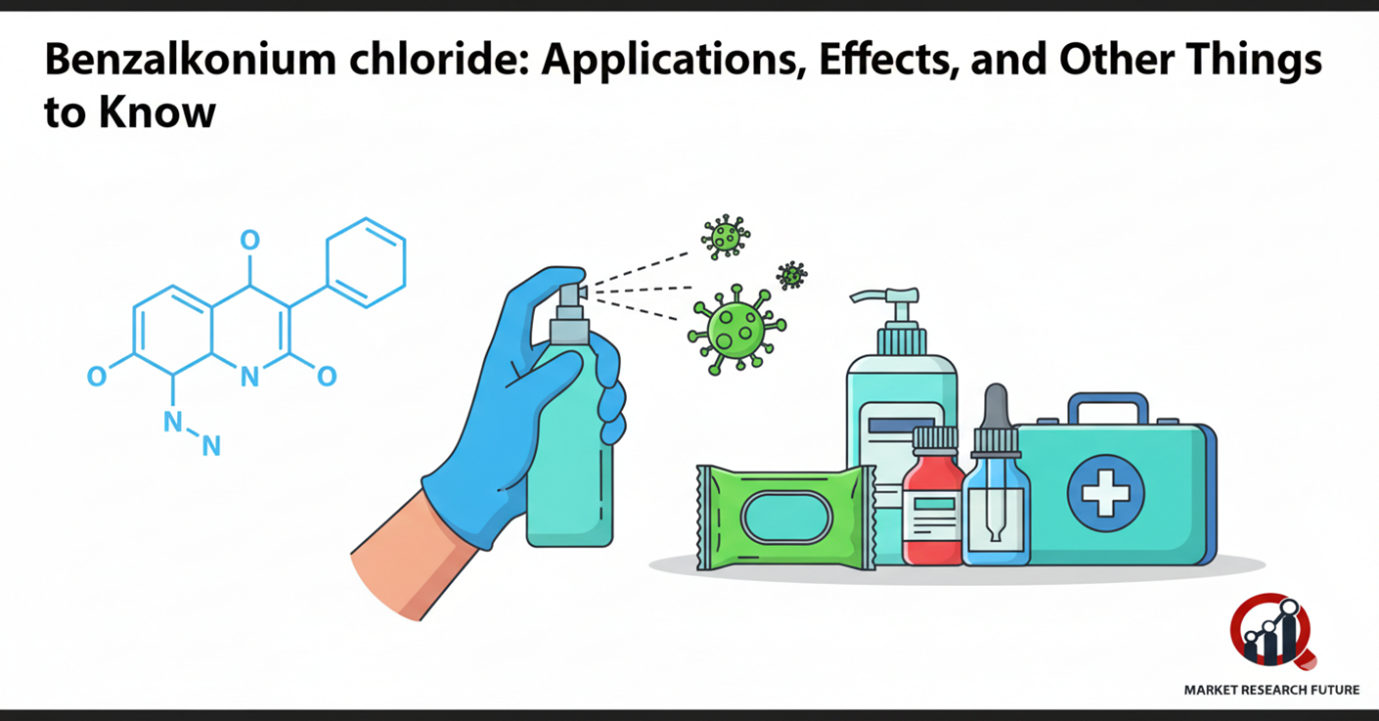Benzalkonium chloride: Applications, Effects, and Other Things to Know

Benzalkonium Chloride Industry
Benzalkonium chloride (BAK) is a strong quaternary ammonium compound that is well known for its ability to kill germs and clean things. People often confuse BAK with chloroxylenol, but BAK is different because it has strong antimicrobial properties and is used in many health, pharmaceutical, and personal care products. It is widely used in non-woven and woven medical dressings to protect against harmful microorganisms like Escherichia coli, Klebsiella, and Pseudomonas species. BAK also works very well against yeast and some types of mycobacteria.
The way BAK works as an antimicrobial agent is by breaking down the cytoplasmic membrane of microorganisms, which causes the contents of the cells to leak out and stops protein synthesis. It also messes with the respiratory chain, which makes it hard for bacteria and fungi to stay alive. Because of these qualities, BAK is seen as a strong synthetic antiseptic and bactericide in the fields of medicine and personal care.
Benzalkonium chloride is sold under a number of brand names, such as Cibacil and Salutar. People often use it to clean and disinfect wounds, surgical tools, and medical surfaces. It makes disinfecting more effective by making it easier for detergents to get into air-dried surfaces when added to cleaning fluids.
BAK is a flexible compound made up of benzyl alcohol, alkyl polyethylene glycols, and benzoic acid derivatives. The main way to make it is by reacting benzyl chloride with ethylene oxide and then doing more chemical processing. This unusual mix is one of the reasons why it is so widely used in everyday items.
Benzalkonium chloride is a preservative in mouthwash, toothpaste, deodorants, and other cosmetics in the personal care industry. It helps keep bacteria and fungi from growing, which keeps products from going bad and extends their shelf life. It works as an antimicrobial agent in toothpaste, killing Streptococcus mutans and Streptococcus salivarius, two types of bacteria that cause dental plaque. It also helps stop the growth of methicillin-resistant Staphylococcus aureus (MRSA) in controlled settings.
BAK is used in the pharmaceutical industry as a preservative in eye drops, nasal sprays, ointments, and topical creams. Adding it to eye drops helps keep bacteria from getting into the eyes after surgery or laser treatment, which keeps patients safe. BAK also helps keep different drug formulations stable by keeping them from getting spoiled by bacteria and breaking down in the environment.
Benzalkonium chloride is used in both homes and businesses, in addition to healthcare. It works as a desiccant in air conditioning systems because it can soak up moisture, and it is also used in household cleaners and sanitizers. The fact that it is used in Listerine mouthwash shows how well it works for oral hygiene and preventing infections after dental work.
BAK also has antiviral properties, as laboratory studies have shown that it works against some viral strains, such as HIV-1. But you have to be careful when you use it. Even though it has benefits, long or too much exposure can cause bad reactions in sensitive people, like skin irritation, contact dermatitis, or mild breathing problems.
Benzalkonium chloride is still very important for keeping things clean and preventing infections, but it is important to know how to handle it safely and be aware of possible allergic reactions. Its wide range of uses in many fields shows how valuable it is, but careful formulation and use make sure that its strong effects stay helpful instead of harmful.

Leave a Comment